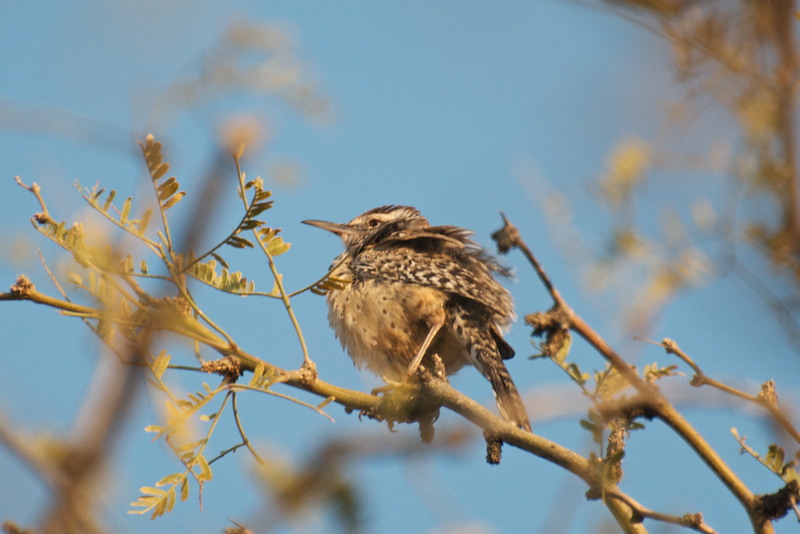
D7000 DSLR Imaging: NGC2371 and NGC5248
Posted: 16 March 2012
The observatory was opened Thursday, 15 March 2012, at 1806 MST, 84°F. As I walked to the observatory, I was greeted with some singing by a neighbor:

The sky was mostly clear but there were some scattered clouds. I delayed powering up the telescope as I was going to video record the setting sun in another attempt to capture the "Green Flash". At 1818 MST, 13 minutes before sunset, Venus was shining brightly high in the sky. As the sun set, I did the video recording but no flash was captured. The sunset was pretty:

The telescope was powered up at 1837 MST and using 77X, I viewed Venus, then Jupiter and 3 moons, at 1840 MST. I then began a search for Mercury. The clouds in the west were not helping. I tried using 7x50 binoculars. The clouds were very slow movers, being in almost the same location for 30 minutes after sunset and in a position to hide Mercury. I gave up on seeing Mercury at 1914 MST. I went back to Jupiter; all four Galilean Moons were visible. Next, I prepared the D7000 DSLR for the night's DSO imaging at prime focus + Off-Axis Guider.
At 1944 MST, viewed Mars, still somewhat low in the east, 77X and 206X. Seeing was not very good; only the North Polar Cap was visible.
At 2000 MST, I began observing M42, the Great Orion Nebula, 77X and 133X. At 206X, I noticed that all six stars in the Trapezium visible, the four bright stars and two very faint stars. I upped the magnification to 364X and the six stars were still visible. They were also visible at 133X and 77X. At 2032 MST, viewed M1, the Crab Nebula, 77X.
I began imaging. I did a focus test using the Bahtinov Mask on the star Betelgeuse. Then slewed to NGC2371, a faint planetary nebula. I wanted to do a longer exposure than the previous night's 5 minute, ISO 6400, exposure. This is a guided, cropped, 10 minute, ISO 5000, exposure:

I ended imaging at 2140 MST but left the camera mounted on the 8" telescope. I slewed the telescope to NGC5248, a faint galaxy, my next imaging target. It was currently too low in the sky for imaging. At 2205 MST, I did two framing test exposures and looked for a good guide star. I found a good star. I then began waiting for the galaxy to rise higher.
At 2223 MST, I viewed Comet C/2009 P1 (Garradd) using 7x50 binoculars. Like the previous night, it was still a faint fuzzy disk.
At 2240 MST, I began a 5 minute, ISO 6400, guided exposure of the galaxy NGC5248, with this cropped result:

I then removed the camera and viewed Saturn through some tree limbs, 77X and 206X.
Closed the observatory at 2306 MST, 59°F. A nice 5 hour session.
As a test, I have implemented the Livefyre commenting system. Use the Comments section below, or you can Email Me. If you use the Livefyre Comments section, please let me know of any problems using it. Thanks.
Go to the previous report.
Return to the Cassiopeia Observatory Welcome Page.